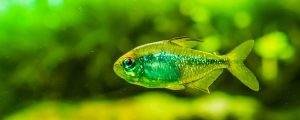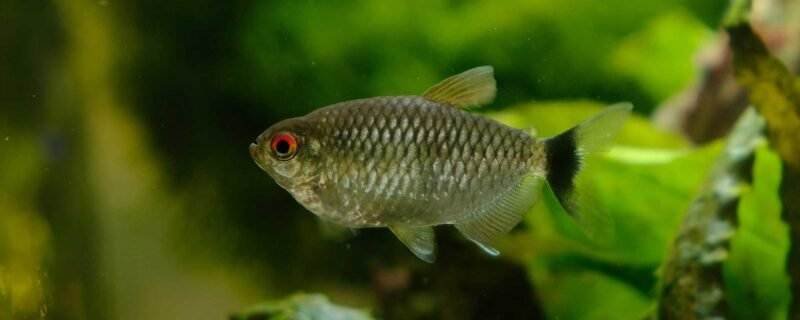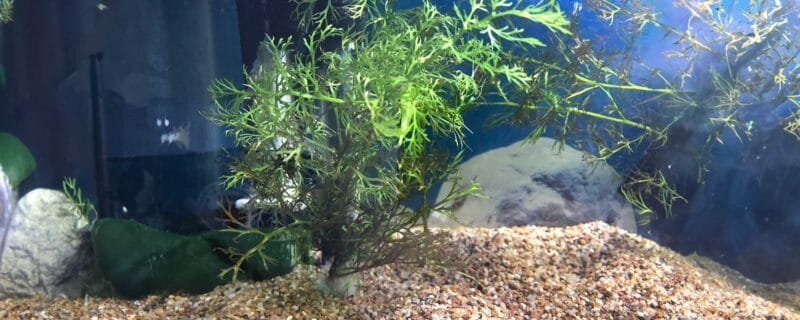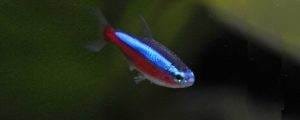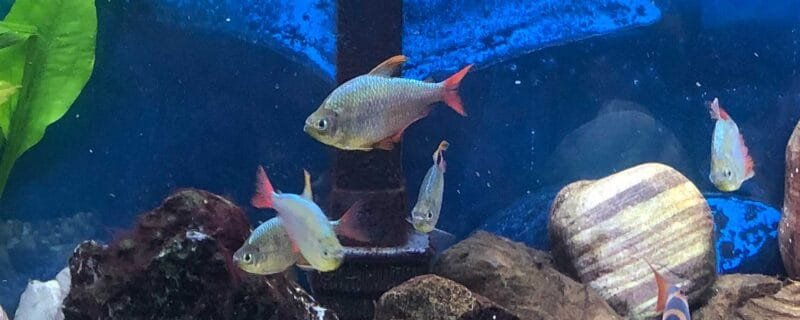The Emperor Tetra, scientifically known as Nematobrycon palmeri, is a striking freshwater species renowned for its royal hues and elegant demeanor. Native to the slow-moving streams and tributaries of Colombia’s San Juan River basin, this tetra adds regal beauty and peaceful energy to any well-maintained community aquarium.
With its gleaming, metallic body and gracefully flowing fins, the Emperor Tetra is not only a favorite among aquarists for its appearance but also for its hardy nature and gentle temperament. Whether you’re a beginner or a seasoned aquarist, this species offers an excellent blend of beauty and ease of care.
Native Habitat
The Emperor Tetra originates from the lush, forest-shaded waters of western Colombia in South America. These areas are characterized by soft, slightly acidic water, dense vegetation, and subdued lighting—an environment that should be replicated as closely as possible in home aquariums for the fish to thrive.
Size
Emperor Tetras typically reach an adult size of around 1.5 to 2 inches (4 to 5 cm). Despite their modest size, their long, flowing fins and luminous coloration give them a larger-than-life presence in community setups.
Diet
These tetras are omnivorous and benefit from a varied diet. In the wild, they consume small insects, larvae, and plant matter. In captivity, they thrive on:
-
High-quality flake or micro-pellet food
-
Frozen or live foods like brine shrimp, daphnia, and bloodworms
-
Vegetable matter such as blanched spinach or spirulina-based foods
Feeding a balanced diet enhances their coloration and overall health.
Sexing
Sexual dimorphism is quite pronounced in Emperor Tetras:
-
Males have longer dorsal and caudal fins with a more intense purple or blue sheen and a black stripe that runs through the eye.
-
Females tend to be slightly smaller and rounder-bodied, with shorter fins and less intense coloration.
One telltale sign of a male is the blue iris, whereas females display green irises.
Breeding
Breeding Emperor Tetras is relatively straightforward with the right conditions:
-
Use a separate breeding tank with soft, slightly acidic water (pH around 6.5)
-
Provide fine-leaved plants or spawning mops for egg deposition
-
Condition the pair with live foods
-
Once spawning occurs, remove adults to prevent egg predation
The eggs hatch in about 24–36 hours, and fry become free-swimming within 3–5 days. Infusoria and baby brine shrimp are ideal for initial feeding.
Water Conditions
To mimic their natural habitat and maintain optimal health, provide:
-
Temperature: 73–81°F (23–27°C)
-
pH: 5.5 to 7.5 (slightly acidic preferred)
-
Hardness: Soft to moderately hard (up to 15 dGH)
-
Filtration: Gentle, with subdued lighting and floating plants to diffuse brightness
Weekly water changes of 25–30% will help maintain ideal conditions.
Ease of Care
Ease of Care: Easy to Moderate
Emperor Tetras are adaptable and robust, making them suitable for aquarists of all experience levels. However, they do best in mature, stable tanks with a peaceful environment and consistent care.
Community Compatibility
Emperor Tetras are excellent community fish. Their peaceful temperament allows them to coexist with:
-
Other small tetras (e.g., neon, cardinal, or rummynose)
-
Dwarf gouramis
-
Peaceful rasboras and danios
Avoid housing them with aggressive or fin-nipping species, such as tiger barbs or larger cichlids.
Species Variations
Though Nematobrycon palmeri is the most common, several color morphs and closely related species exist within the genus:
-
Albino Emperor Tetra: A selectively bred variant featuring a creamy white body, pinkish eyes, and a softer version of the flowing fins. Though less vibrant than the wild type, albino Emperors are prized for their unique beauty and are equally peaceful and hardy.
-
Rainbow Emperor Tetra (Nematobrycon lacortei): A rarer cousin with more vivid red and blue coloration.
These variations bring diversity and an exotic flair to community aquariums.
Tank Setup Recommendations
-
Tank size: Minimum 20 gallons for a small group (they do best in groups of 6 or more)
-
Substrate: Dark sand or fine gravel to accentuate their colors
-
Plants: Dense planting with open swimming space, including Java fern, Anubias, and floating plants
-
Lighting: Dim to moderate to match natural habitats
Adding tannins via Indian almond leaves or driftwood can help simulate their native blackwater environments and reduce stress.
Final Thoughts
The Emperor Tetra (Nematobrycon palmeri) lives up to its regal name. Its calm nature, iridescent coloration, and compatibility with a wide range of tank mates make it a standout choice for hobbyists seeking elegance and tranquility in a freshwater setup. Whether you choose the standard form or the albino variation, these fish add sophistication to any aquascape.
If you’re seeking a tetra that’s both beautiful and relatively low maintenance, the Emperor Tetra truly reigns supreme.

